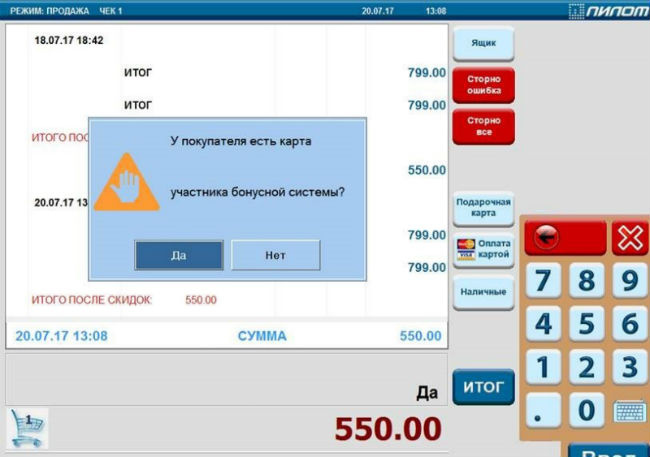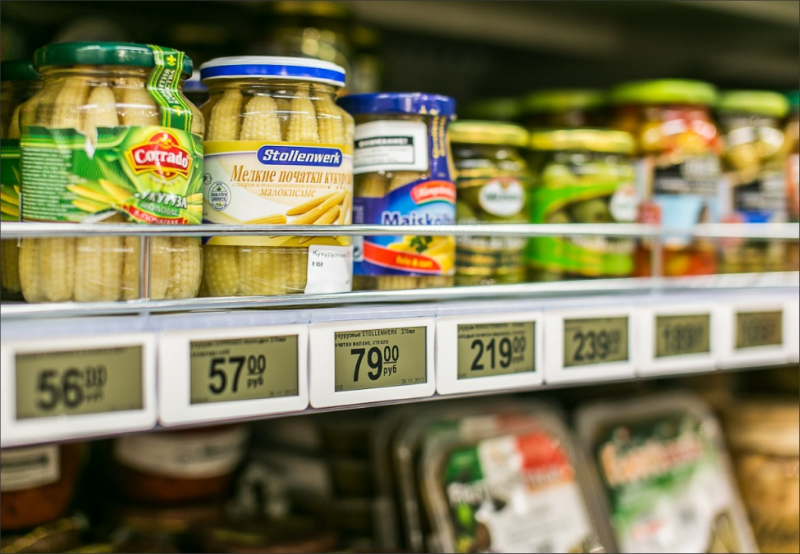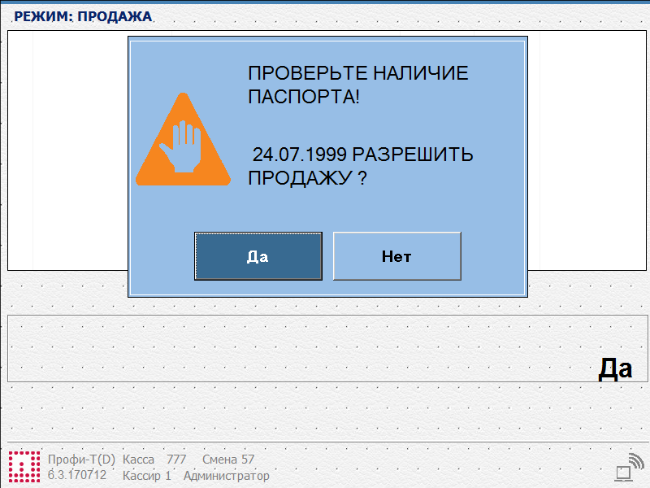Automation advantages: how technologies correct mistakes of store employees

In our blog we write a lot about technologies in the field of retail and automation of modern stores . Advanced infrastructure allows not only to increase the efficiency of all processes in retail outlets, but also to minimize the impact of the "human factor". Today we will talk about how technology helps prevent store employees from making mistakes.
Ignoring loyalty cards and resale opportunities
Mistakes of employees can lead not only to problems with inspection bodies, but also deprive the store of potential profit. It is no secret that many retailers are actively working on developing loyalty programs that encourage customers to buy more and more often. However, without the participation of the employee behind the cash register, the full-fledged operation of any loyalty system is impossible.
WalMart, an American retailer, collects sales data to predict possible patterns of customer behavior. Sometimes using such technologies allows you to get unexpected results. For example, on Friday night, men are more likely to buy diapers for children, and beer for themselves.. Thus, cash register software, which contains knowledge of this fact, may advise the cashier to offer an additional, at first glance, unexpected product, when you buy beer. The cashier himself could offer something more suitable for beer in his opinion - and he would lose. After detecting such a correlation in Walmart, the diaper sections were moved closer to the beer coolers.
Often, employees simply forget to ask the client about the availability of a special loyalty card or offer him to receive it. To avoid this, cash register software can show special reminders - this is what the Profi-T system does . As a result, the likelihood that the client will draw up a loyalty card and begin to actively participate in the program increases.

In addition, whether the sale will end in many respects depends on the employee. In a piece on retail automation, a journalist at Pando told the story of how one of his acquaintances, a venture investor, went to an electronics store. The buyer was already at the checkout and was about to purchase an expensive gadget when the seller asked him if he had seen a new, more powerful model of the device that was coming soon. As a result, he decided to abandon the purchase and wait for the new version.
More often, the sale does not happen due to the seller’s inaction - the employee may not offer the client to make an additional purchase. To prevent this from happening, cash register software can also generate recommendations on what additional products to offer the client along with his purchase - this increases the chances of increasing the final check.
Errors when working with goods
In addition to problems with communication with the client, purely technical errors may occur, which, however, are expensive for shops. One of these problems is updating the price tags for goods and errors that occur during this process, leading to negativity on the part of buyers.
A common situation - in the cash software, the product has one price, but for some reason the price was different (for example, an employee made a mistake or forgot to change it). Usually, all this is already found out at the checkout when the goods “made their way” at a higher price than the buyer expected - and few people will like it.
While there is a clarification of the reasons for the discrepancy at the checkout, the queue is about to begin, customers are experiencing a negative. And any deposit left by the buyer leads to the fact that another time he will not come to this store, giving preference to a competitor. In addition, by law, a store is required to sell goods to a customer at the price indicated on the price tag. That is, errors in the design of price tags lead to immediate financial losses.
To avoid such problems, some retailers use electronic price tag technology , the information on which can be updated centrally through a special server without the need for manual labor.

However, the introduction of an electronic price tag system (hardware + software) is quite expensive, and so far this affects the penetration of technology.
There are more budgetary ways to reduce the likelihood of errors. One of them is mobile revaluation technology . This approach implies the use of special software and hardware systems in the process of revaluing goods. They include specialized software (for example, Pilot has its own development - the OmniLink software package ), data collection and processing terminals, as well as mobile thermal printers.
It works like this - when a price update occurs or the employee sees that the price of the goods in the accounting program has changed and does not match the actual price on the price tag, he goes to the shelves with the goods and begins the scanning process. If the system finds a discrepancy in prices, it automatically sends a command to print a new price tag. Mobile printers are placed on the belt of the employee, so that the price tag is printed right on the spot. This reduces the likelihood of errors and greatly simplifies the reassessment process.
In addition, the use of automation technology allows store and store management to better understand the location of a particular product. This, among other things, reduces the likelihood of loss of goods or its theft.
British retail consultant Romeo Richards on his bloggives the following calculations on this occasion - if we have a network with a turnover of £ 10 million pounds and an indicator of retail shrinkage (that is, write-offs of lost, damaged or stolen goods) of 2%, and employee errors account for 18% of this “shrinkage”, then a year this will result in a loss of £ 36,000. If at the same time the store’s net profit level is 1%, then to cover these losses, it will be necessary to generate sales of £ 3.6 million. How many stores can do this so easily? Therefore, automation is very important.
Violation of laws and regulations
One of the most common cashier mistakes is selling alcohol and cigarettes without asking for your passport. If such goods are sold to minors, and this will become known during the inspection or, for example, control purchase, the store will be issued a large fine.
To avoid such problems, possible mistakes of employees are corrected with the help of technology - for example, the Profi-T system developed by us gives the cashier hints and directions during maintenance. Among them there is a requirement to ask for a passport when selling alcohol. When you try to "break through" such a product, a signal sounds and the corresponding message is displayed on the cash register screen.

The future: are technologies threatening employees?
According to studies , automation can seriously threaten the prospects of store employees - according to some reports, up to half of all retail positions can be automated in the future. Some positions do not exclude the possibility that in the future they will completely disappear - such as the position of a cashier.
But the next two or three years on the retail market is unlikely that anything will change dramatically: no matter how leaps and bounds automation of retail develops, so quickly it will not take away the “human” professions. However, indeed, the development of technology for trade helps store owners to reduce staff. There are several notable trends developing in Russia:
- processes of automation of goods accounting. Electronic price tags, mobile printers allow retailers to reduce staff and spending on supplies. In both cases, store employees do not need to manually print out price tags and paste them around the room;
- the introduction of self-service systems in the store can reduce the number of cash registers and, accordingly, cashiers, as well as optimize cash management;
- Digital Signage technology will help the retailer reduce the cost of conducting promotions and, as a result, reduce the number of personnel involved in them. In addition, this tool allows you to sell advertising time to your partners and have an additional source of income;
- information kiosks will help reduce the staff of consultants. Buyers simply by scanning the barcode of the product of interest will clarify its price and receive additional information about it. Retailers can display any multimedia content on the info kiosk.
In addition, the development of technology also helps to reduce the area of outlets - it may be more profitable for a business to maintain a small automated store with a small number of staff in the future. However, those workers who remain in such stores will need to become more productive and learn how to manage technological means.
Such a transition to more advanced skills than simple physical work, on the other hand, will contribute to the growth of employee salaries. At the same time, the likelihood remains that the increase in the efficiency and profitability of stores will ultimately lead to an increase in their number - as ATMs at one time allowed banks to open more branches, in which employees not only give money, but also provide other financial services, such as obtaining loans, and communicate with customers.
